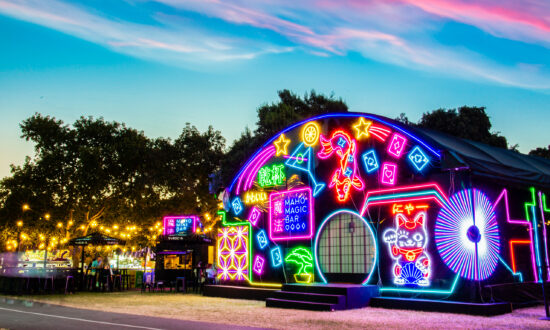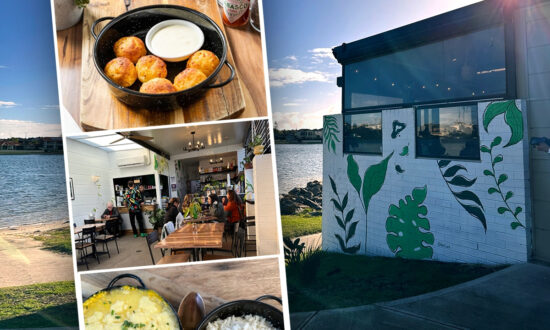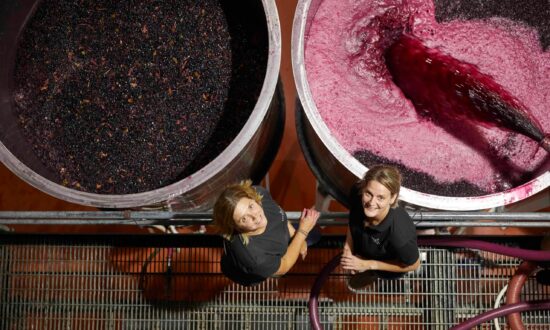When it was first suggested to winemaker Charlotte Hardy that she should make a Semillon, like many who have no real inkling of its natural talents, she replied simply with a “yuk”.
Of course, she knew of the great aged white wines of the Hunter Valley, but they were in a league of their own. The rest she had tried locally from the 1980s and ‘90s were fairly average examples. Why would you go there?
But after she completed a more detailed exploratory tasting, Hardy quickly changed her tune. She was amazed at how one variety could celebrate its natural, mouth-watering acidity as well as drink with richness and genuine mouth texture. Most grapes can do one or the other: not many can do both. She was amazed.
And so it passed that when she began Charlotte Dalton Wines in 2015, the first variety she worked with was Semillon – and she still does, from the same blocks today, at the Deanery vineyard outside of Balhannah in the Adelaide Hills. It’s thought to be the last remaining Semillon in the Hills.
“It was a lightbulb moment, and my love for Semillon has grown and grown,” Hardy says. “There’s just so much to love about it, so much that’s wonderful about it.”
It seems that winemakers who are fans are really big fans, but the one thing they all agree on is that it’s one of the hardest varieties in their portfolios to sell. Semillon, essentially, has fallen off the radar for consumers, and so that translates also to falling off wine lists and dropping volumes on distributors’ sales sheets.
Out of fashion is an understatement. But, whenever those same winemakers can convince a cellar door visitor or sommelier to taste their Semillons, similar light bulbs to Charlotte Hardy’s often switch on to the variety’s undiscovered joys. She sells more by hand at her Port Elliot cellar door than her distributors take on.
At cellar door, everyone loves it. It’s often a surprise to them.
It’s a gatekeeper thing, she says, referring especially to restaurant wine buyers across the country. This seems crazy, given that Semillon is a variety that’s naturally suited to food, especially seafood, due to its capacity to deliver acidity and mouth-pleasing texture. It’s not a searingly sharp drink, nor is it oily and viscous. Fresher styles also can have an attractive aromatic, sometimes herbal character, others floral.
“I think the honeysuckle nose gets people in,” Hardy says, referring to her own two styles, one a brighter and crisper new vintage release, the other a more serious, barrel-fermented version that involves more intensive winemaking to stir the spent natural yeast after fermentation, known as lees, which helps to build the wine’s palate weight
“That nose is quite an obvious thing for newcomers to the variety, even if they don’t have the language or the memory bank of smells to recognise that descriptor.
“Then there’s a grapefruit pithiness, so the acid is not that evident until later. It’s quite a succulent acid, which makes it so perfect with food.”
Semillon can be used to turn out fresh and zesty, new vintage styles, as well as more complex oak-influenced variations. It also has a capacity to age with delicious consequences, developing, nutty, buttery, beeswax, and often lemon curd and toasted characters. For many novices, this is a surprise in a white wine. More experienced wine experts revere this kind of maturity out of the Hunter Valley’s world-renowned examples, but it’s not that region’s exclusive gift.
Hardy’s first-ever 2015 Semillon is now heading in the same direction. So, too, is Clare Valley’s number one iteration, Stephanie Toole’s Mount Horrocks Semillon, which is made from her own 21-year-old certified biodynamic plantings on an isolated block 500m above sea level on the slopes of the mountain the brand is named after.
She also brings barrel fermentation in French oak into her winemaking, as well as that texture-producing lees stirring. The result is a subtly creamy style that still retains Semillon’s classic lemon fruit flavours and tang.

Semillon seems like a left field choice to many wine drinkers, but it finds favour when tried at the cellar door.
Toole has kept the faith even though she’s saddened by the lack of market power in the variety. In people’s minds, they think it’s either greenish and herbaceous, or lean and searingly acidic like a lot of early-release Hunter Valley versions.
“But at cellar door, everyone loves it. It’s often a surprise to them,” Toole says. “The secret to ours is that I like mine to have a more rounded flavour, and we can actually get the fruit ripe, and not pick it at 10 Baume (low grape sugar level) because it’s going to rain at any time like in the Hunter.
“Every time I make it, and I look at the barrels before bottling, and it’s just a joy; it’s wow, it looks really good.
“It’s a fantastic food wine,” she says. “You put it with any of the SA seafoods like scallops, oysters and prawns and King George Whiting – it’s absolutely delicious.”
Her enthusiasm for the variety remains despite all its market challenges.
“We just have to give it the love it deserves,” she says.
Maybe if the variety had a cool name, it would do better? Maybe it could begin to be considered as an alternative white? Maybe if it found a new generation of enthusiastic winemakers, they could then attract their followers to the variety?
Those questions are being addressed in parts of the Barossa where Semillon has had a distinguished history as the region’s signature white variety. Peter Lehmann’s Margaret Semillon, named after the late winemaker’s wife and doyenne of the Valley, was the star Semillon turn for years and years, steered by chief winemaker Andrew Wigan who developed an early picked style without oak, but matured in bottle for five years before release.
Other older family growers, like the Scholz’s at the Willows vineyard, stayed the distance, even though it was monstered in the marketplace by the rise of Sauvignon Blanc – the so-called “Savvalanche”. Semillon sales fell dramatically, grape prices fell, and over time many growers replaced their vines with Shiraz as it became the Barossa’s mainstay.
Eperosa vigneron and winemaker Brett Grocke is an avowed fan of Semillon and notes even in the past few years he’s seen old blocks, some planted back before World War Two, being pulled out to plant Shiraz. The mad thing, he says, is that Semillon grape prices are rising again because there’s such little resource left – and it’s gaining a little more recognition with a younger generation of winemakers in the district.
Grocke’s Semillon comes from his vineyard at the top of Magnolia Road in the Vine Vale district – the plantings ranging from 1941, 1971 and 1975. The site is unique and plays a big part in the fruit’s integrity, he says. Situated at the base of Menglers Hill, the vineyard is planted on deep sandy alluvial soils, the vines dry-grown but tapping into deep subsoil moisture. Cold air from three gullies cools the area – the locals call it the Vine Vale Doctor.
Like fellow aficionados, he loves the openness and freshness, the lemon spectrum of flavours, and what he also notes as an oyster shell-like saline character.
“The winemaking style is quick with minimal inputs,” he says. “Because the value isn’t in the end product.
“It is a passion project: barrel ferment, 16 months in oak, under cork, it’s a lot of energy and a lot of money for say $30-$35. I know that it would be far better sinking my money into Shiraz.”

Barossa winemaker Brett Grocke is hoping for a Semillion renaissance. Photo: Andy Ellis
Grocke goes the extra mile in his Semillon program, adding to his ongoing new releases a creative NV blend of three vintages so there’s a range of wines with barrel maturity from 16 to 36 months. That, too, was an artistic decision based on his own love of the saline and minerally characters seen in wines from France’s Jura region.
“It’s got this saline, oyster shell, slightly Jura-esque thread through it that you get from some ageing. And soft in the palate. I love that Semillon can do that,” he says.
It’s these characters that also have attracted a new generation of Barossa-based winemakers to explore the variety, along with other older vines in the are such as Chenin Blanc, White Frontignac, Palomino, and Pedro Ximenez.
“The nice thing is there are a lot of younger players who are grabbing these blocks. They’re getting into those little patches, maybe just three or four rows here or there, and they’re taking it and doing really cool things with it,” Grocke notes.
“I might be a bit of a Sem/Muscat/Chenin blend, not fined, not filtered, maybe some suspended solids, but it’s refreshing, clean, good natural acid.
“There’s a sense of freedom and liveliness in these wines that I think captures a new generation.
“And if it just means they’re helping to retain what old vines are there, scouring through the Barossa and finding these odd rows and bits and pieces, that’s great, because there is so little white in the Barossa, there’s a bit of demand now.”
Grocke clearly loves the Semillon variety and has come to realise that the old ways of making it are no longer relevant.
“It’s a delicate white grape that needs to be treated with delicate hands to bring out the best in it, he says. “It still has a proper place in the Barossa, and I really, honestly believe that those original whites will have a renaissance.”
TASTING NOTES

The Willows Vineyard Semillon 2022
Barossa / 11.2% / $22
Bursting with aromatics, created as a youthful, bright-eyed style by winemakers Peter and Jack Scholz who have whole-bunch-pressed fruit from a 1936-planted vineyard and get it into bottle very soon after fermentation has finished. It’s up-front in celebrating all things lemony – zest, flesh, grass and butter – in its flavour wheel, then revealing a subtle citrus pithiness and acidity in the palate to be texturally mouthwatering to finish. It’s as good as it gets in this fresher style of Semillon, and will still mature over several years to gather in more toasty, lemon cream biscuit notes. Great value.
Charlotte Dalton Wines Love You Love Me Semillon 2022
Adelaide Hills / 11.7% / $30
From the Deanery Vineyard outside Balhannah, one of – if not the very last – sources of Semillon in the Hills. It smells like lime cream and key lime pie with a touch of herbals like lemon verbena before slipping into a saline-like seam through the palate, picking up a light sprinkle of white pepper on the way through. It’s moreish and salivating right now, and there’s good evidence this will develop like its predecessors into a classically more complex wine over five to eight years. Charlotte Hardy, the winemaker behind the label, also crafts a barrel-aged Semillon called Aekeengel ($42), the latest iteration from 2019. Full lees stirring over many months has encouraged a creamy/yeasty wine with lovely apples and lemon sherbet tang on the palate. Serious winemaking with a delicious outcome.
Peter Lehmann Margaret Semillon 2016
Barossa / 11% / $45
One of the Barossa’s great white wines over many years, decades even. The name Margaret refers to Margaret Lehmann, wife of the late Peter Lehmann and a regional powerhouse in her own right. She has always loved “her” Semillon, as have the state’s wine show judges who have regularly awarded it class trophies. The wine is released after five years of bottle age – no oak involved along the way so what we have here is everything to do with fruit integrity and varietal character that encourages a delicious evolution of flavours for up to a decade and even longer. We are just starting to see this occur in the latest 2016 release: spiced buttery biscuit notes, a suggestion of wheatgerm, fruit spectrum feels of grilled lemon with a touch of aromatic herbals, while underneath lies a varietal line of gentle acidity and a maturing textural mouthfeel. Lots going on when you look closely – a lovely example of the grape.
Mount Horrocks Semillon 2022
Clare Valley / 13.5% / $38
From an isolated estate vineyard, 500m above sea level on the slopes of Mount Horrocks itself, winemaker Stephanie Toole has remained devoted to this wine over many vintages. It’s a full barrel-fermented and matured style with engaging complexity: grilled stone fruits and fennel to start, creamy palate senses following on, with a gorgeous spicy lemony tang that drives the taste profile, finishing with lingering energy. A glorious drink that’s the epitome of Semillon in fine-wine mode.
Eperosa Magnolia Blanc NV
Barossa Valley / 12.6% / $30
A unique wine in any genre, with three vintages in pure harmony. Dare I say, it’s Crosby, Stills and Nash in a bottle. Those vintages are 2018, 2019 and 2020 in equal thirds from a single vineyard of plantings ranging from 1941, 1971 and 1975. Vigneron and winemaker Brett Grocke has been developing this blend over time to add a third variation in his Semillon bag, the others a new vintage, fresher style (2021) and also with some rarer museum stock – the 2015 Blanc captivating and moreish and just beginning to move into its expected aged set of characters. The NV is definitely suggestive of lemons, sea spray and a faint honey note, field grasses too, with a mid-palate tang that isn’t just an acidity thing but with ginger and peppery senses, lemon and grapefruit pith in the textural lines. Subtle yet complex, quietly seductive. Perhaps a wine that winemakers and sommeliers will gravitate towards. At this price it’s a scoop.
Support local arts journalism
Your support will help us continue the important work of InReview in publishing free professional journalism that celebrates, interrogates and amplifies arts and culture in South Australia.
Donate Here




